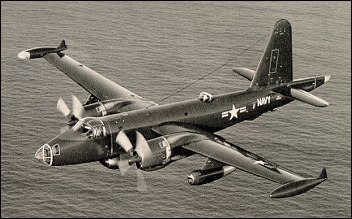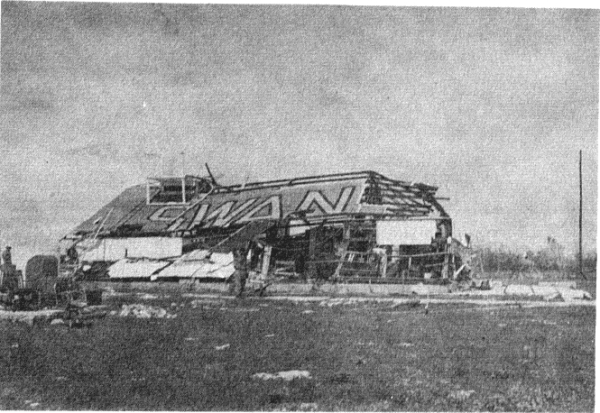
On the morning of September 26, 1955, a Navy Hurricane Hunter plane carrying out routine reconnaissance of Hurricane Janet in the Caribbean lost contact with its base. Subsequent search efforts turned up no sign of the plane or crew. Nine crewmen and two Canadian reporters on the plane were lost but the details of the crash will never be known.
Janet was first detected by commercial aircraft on the evening of Sept. 21st, 350 miles (560 km) east of Barbados. The Weather Bureau classified it as a tropical storm, but by the time it reached Barbados, a day later, it was a major hurricane. It hit Barbados with maximum sustained winds of 120 mph (195 km/hr) causing considerable damage, collapsing buildings, leaving thousands homeless, and killing 38 people. The hurricane weakened as it passed between the islands of Grenada and Carriacou, but still managed to un-roof houses and kill 122 people. By Sept. 24th, Navy planes were having trouble locating an organized center to the storm, but then Janet began to rapidly re-intensify. As it skipped north of the Netherlands Antilles that evening, it was a major hurricane again. A reconnaissance flight on the night of the 25th reported frequent lightning and a well defined eyewall, signs of a strong, intensifying hurricane.

The following morning, the Navy reconnaissance flight designated Stormcloud Five departed from Guantanamo Naval Air Station and flew south some three hundred miles (500 km) to intercept Janet. At 8:30 AM the plane transmitted a message that they were beginning their first inbound leg at 700 feet. Several garbled broadcasts were heard later, but nothing distinguishable could be heard. In this era, radio transmissions from Hurricane Hunters often experienced interference from static caused by the heavy rainfall in the storm’s core. But by 11:30 AM the flight was deemed overdue to have radioed the end of their first leg and report a center fix. The Navy base was unable to contact the plane and search and rescue operations were begun. Despite extensive efforts over the next days, no evidence of the aircraft nor crew were ever found. This was the only reconnaissance flight into an Atlantic hurricane ever lost.

The subsequent reconnaissance mission estimated the winds were up to 160 mph (258 km/hr) and recommended future flights not attempt penetration but to carry out fixes by using radar. Janet passed over the Swan Islands, where a U.S. Weather Bureau station was located. Many of the buildings at the station began to collapse in the high winds and everyone took shelter in the Navy seismic station, the only concrete building on the main island. It was estimated that Janet’s maximum sustained winds were at 175 mph (280 km/hr), its peak value.
Janet diminished only slightly and struck the Yucatan Peninsula a half day later, with winds down to 150 mph (240 km/hr). The Mexican towns of Chetumal and Xcalak were nearly destroyed with hundreds of people dead and few buildings left standing. Similar damage was done to Corozal Town in British Honduras (now Belize) to the south. The storm rapidly diminished in strength as it passed over the Peninsula. During a brief crossing of the Bay of Campeche, Janet failed to recover its organization, and it made final landfall south of Veracruz. It dissipated over the mountains to the west, but brought heavy rains causing rivers to overflow. Tampico and other coastal towns were flooded and hundreds of people killed in mudslides. In all, Janet killed over a thousand people and caused US$65 million in damages.
List of crew and guests of Snowcloud Five:
Lt. Cmdr. Grover B. Windham Jr. of Jacksonville, FL, Aircraft Commander
LTjg Thomas R. Morgan of Orange Park, FL, Navigator
LTjg George W. Herlong of Yukon, FL, Co-Pilot
Aviation Electronics Technician Second Class Julius J. Mann, 22, of Canton, Ohio
LTjg Thomas L. Greaney, 26, of Jacksonville, FL, Navigator
Aviation Mechanic First Class J. P. Windham, Jr., 32 of Jacksonville, FL (no relation to pilot)
Airman Kenneth L. Klegg, 22, of Cranston, RI
Aviation Electronics Man First Class Joseph F. Combs of Forest Park, NY
LTjg William A. Buck, of Jacksonville, FL, Aerologist
Toronto Daily Star Reporter Alfred O. Tate
Toronto Daily Star Photographer Douglas Cronk